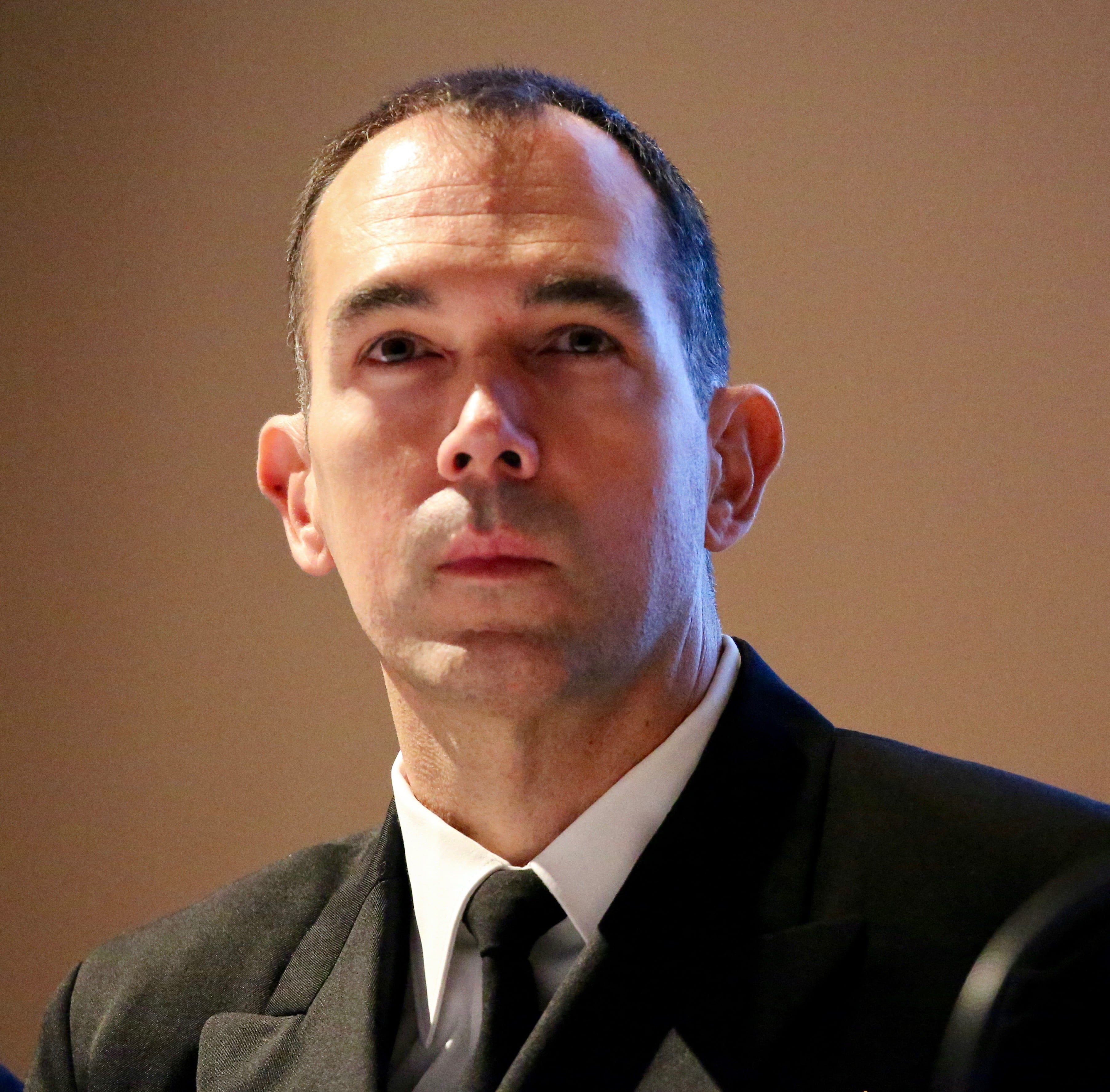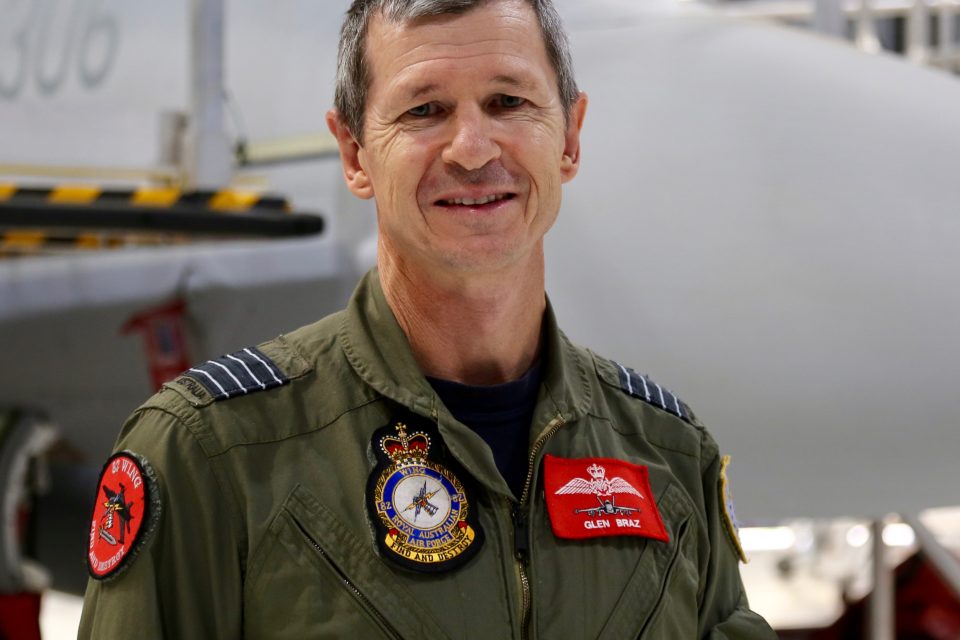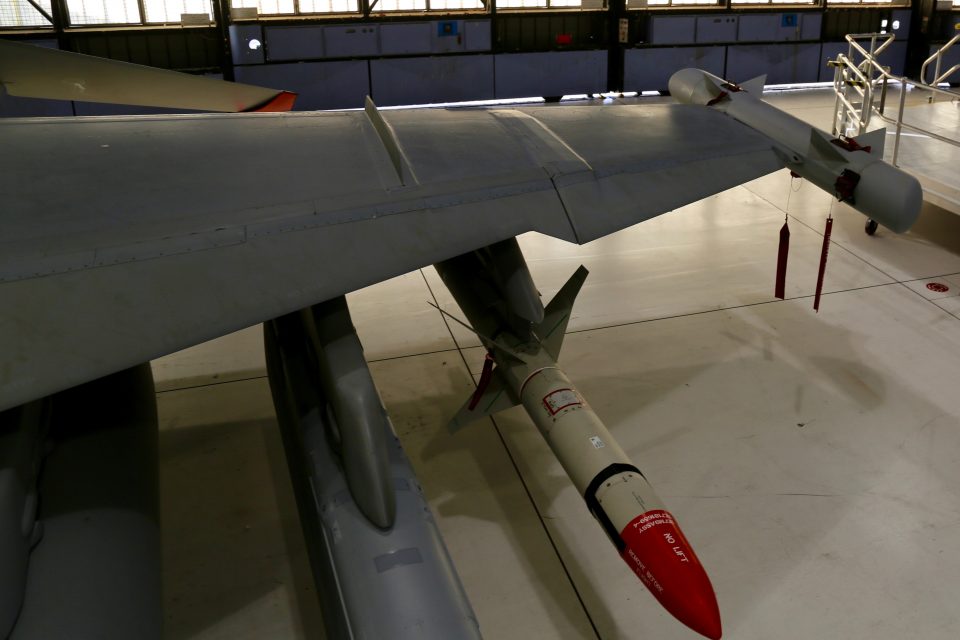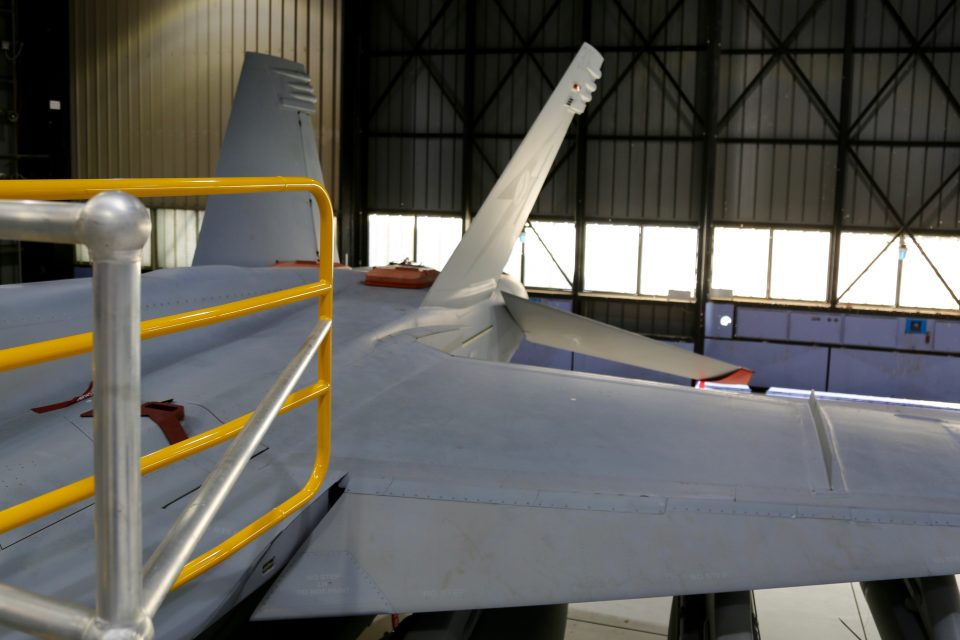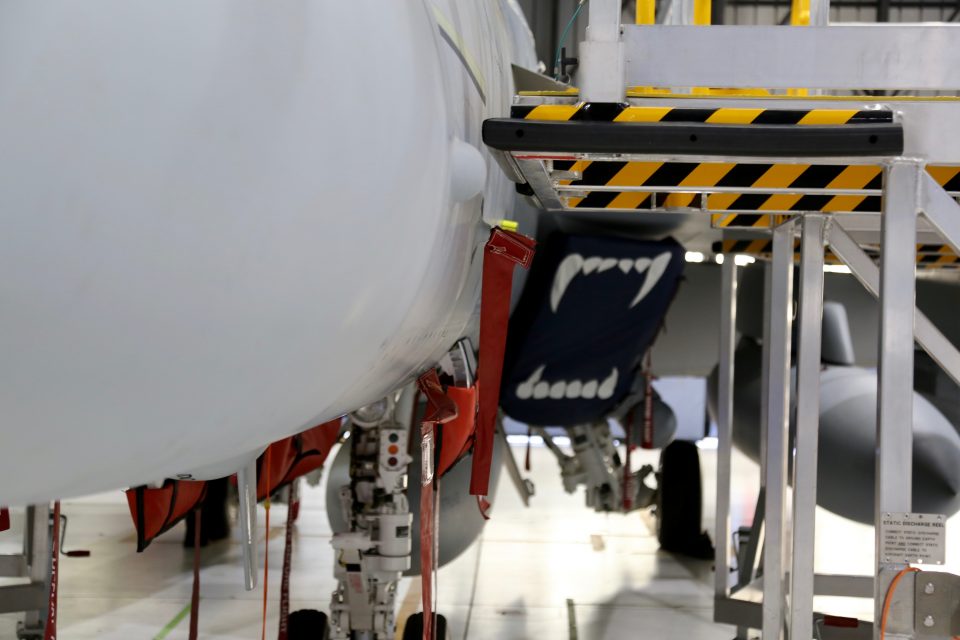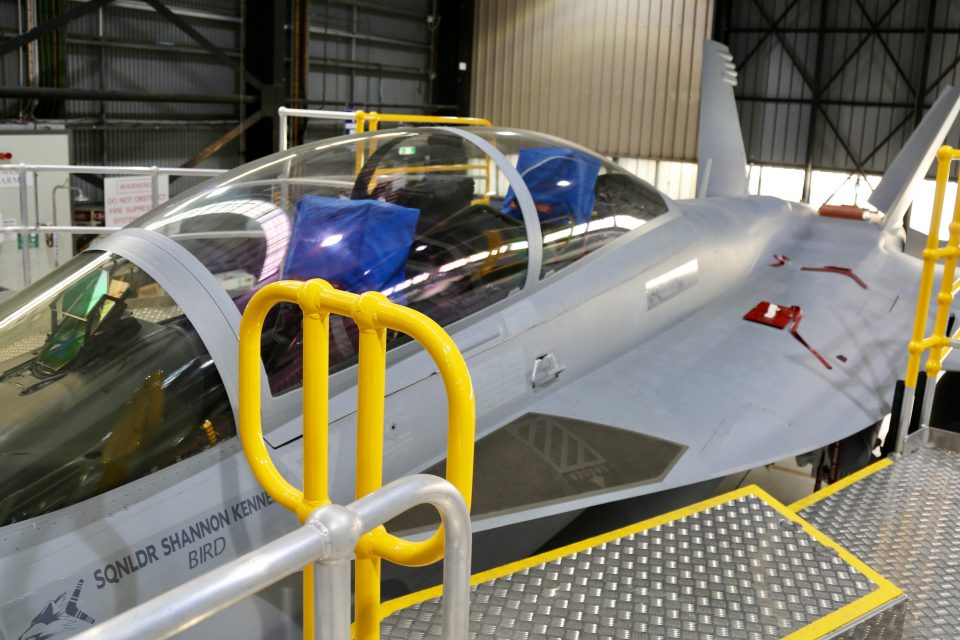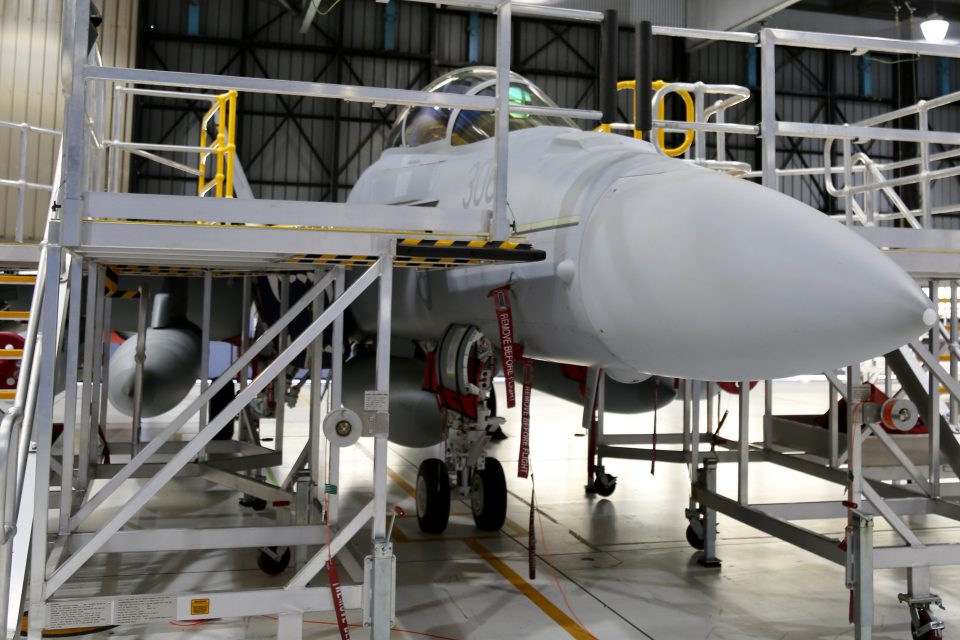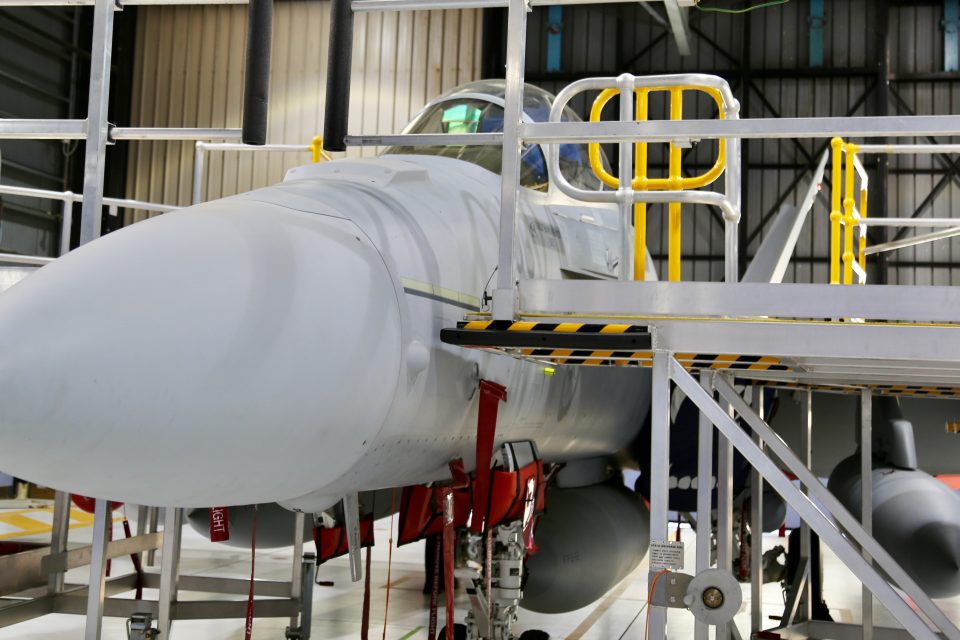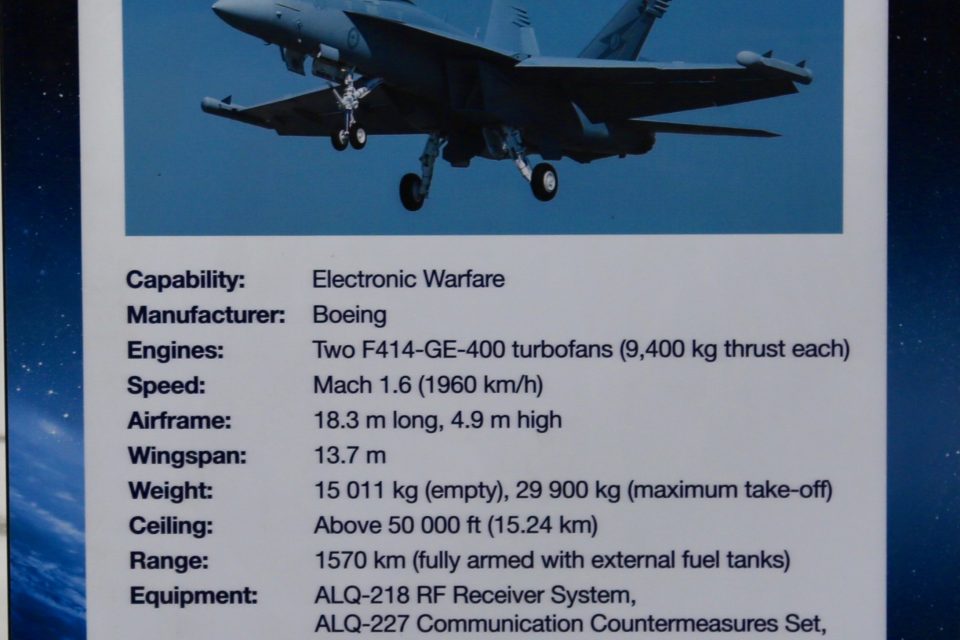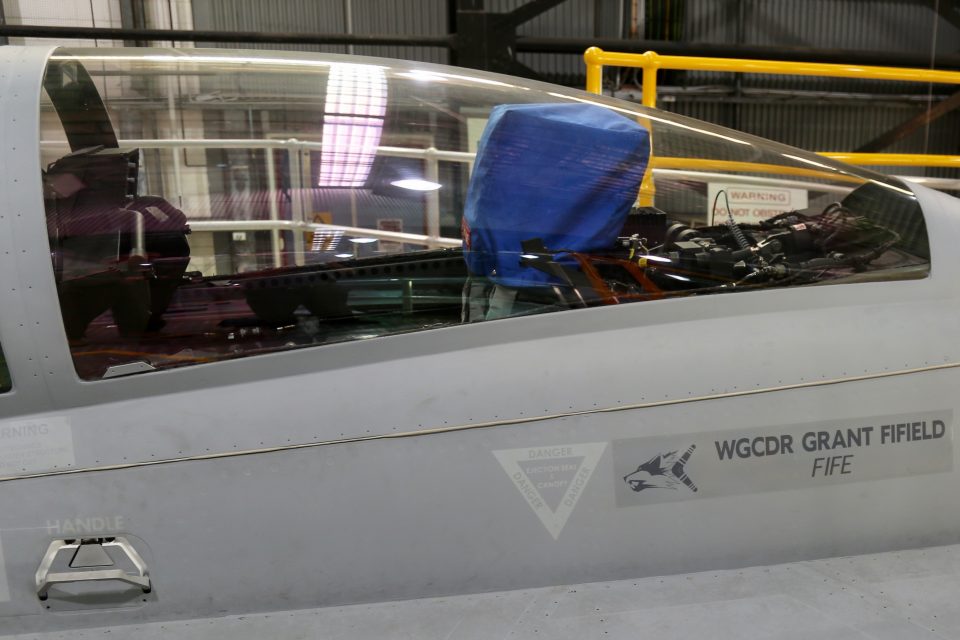2017-08-29 By Robbin Laird
Earlier, I had a chance along with Ed Timperlake to visit HAVOC at the Naval Air Warfare Development Center, and to get the perspective from Fallon on the evolution of EW within the joint force, seen from a US Navy perspective.
In that interview, there was a clear emphasis on Growler as part of a larger effort, and a piece of the puzzle to solve how best to survive and prevail in the contested battlespace.
“There are many of us around here who think that the concept of the E2D the F35 and the Growler integrating would accelerate our transition to where warfare is going with regard to the contested battlespace.
“There are many of us around here who think that would be an outstanding idea that we should really push for and should be a focus of testing and evaluation.
“But there will be people around as well who will say but how does that lead to me dropping bombs?”
https://sldinfo.com/havoc-works-the-electronic-warfare-payload-in-the-digital-battlespace/
The integration piece and getting those who think in legacy kill chains to embrace a very different way of thinking, namely the kill web was also emphasized by CDR Mike Paul when he presented at the Williams Foundation and participated in the panels and discussed these issues over dinner at the Foundation as well.
A key element of shaping the way ahead was highlighted not only in his presentation but the presence of the US Navy Growler community in Australia.
The US DoD’s new EW Strategy tells us that Electronic Warfare underpins U.S. national military objectives through demonstration of electromagnetic spectrum (EMS) superiority. “A force multiplier for a range of military operations, EW maximizes lethality of precision strike weapons, assures mission command and increases mobility by protecting complex battle networks, weapon systems and forces. EW provides rapid situational awareness and produces chaos in adversary decision-making.”
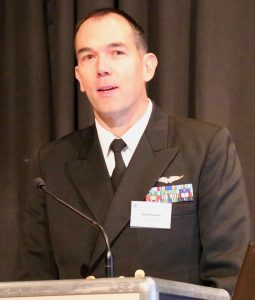
The fact is that U.S. military operations are rarely conducted unilaterally and are increasingly reliant on contributions from our partners and allies. The Navy I think has done great work, ensuring EW development efforts are interoperable, and aligned with our allies (the Growler is a good example). The battlespace awareness you get with the passive sensing capabilities in the Growler is not free – by nature, our mission requires interoperable data sources and software formats.
In fact our Chief of Naval Operation’s Maritime Strategy states that we must also expand opportunities for coalition EW training and education in the U.S. and abroad. We’re tasked to build or enhance partner EW capabilities and capacity, and ensure partner and ally capabilities remain viable against emerging peer or near-peer threats.
Of the 4 Objectives in the DoD’s EW Strategy, we like to say we achieved the “4th Objective” – to foster access, enhance interoperability and grow warfighting capacity – at least at the operational and tactical levels.
This is Operational partnering. It’s easy to say “no,” or “you can’t,” much more difficult to say yes. We had plenty of hurdles, some seeming impossible. I count significant “No’s” that were turned into yes:
A significant part of the presentation detailed how the integration of the RAAF with the US Navy Growler force was achieved and in relatively compressed period of time.
This is a case study in many ways of the kind of integration, which the US and the core allies need to achieve to have the kind of force multiplier effect from an integrated coalition force.
This event is a great opportunity to mention some of the wins we’ve had in operationalizing our partnership in Airborne Electronic Attack (AEA).
We at Whidbey Island and leaders in NAVAIR removed years of cultural barriers limiting collaboration in a short amount of time.
That took people to lead and innovate. But that’s what it took to begin to operationalize a strategic AEA partnership.
Our stated goal was to produce 100% fully capable & interoperable EA-18G wingmen, at all security levels.
At the peak of my Wing’s support phase to 6 Squadron standup in March, we had Australian students and instructors alike in our replacement squadron, Australian officers operationally employed in 3 different squadrons – primarily in this part of the globe.
Multiple deployments to the PACOM AOR, multiple reps and sets of high end exercises, Australian aircrew were put in leadership roles in the squadrons in the air and on the ground.
Australian maintainers getting on the job training during pressurized Growler Tactics Instructor course sortie rates.
At one point we had roughly 45 Australians invading the Pacific Northwest of the US making lasting friendships… our neighbors… babies being born… We went “all in.” We formed personal relationships that make the distance between Canberra and Pacific Northwest coast seem insignificant. Now look at what 6SQN did during their IOT&E for Growler. Amazing.
CDR Paul outlined that the non-kinetic payload was growing in importance both for adversaries and the US and allied forces, but that it was clearly different from a kinetic action.
EW is unlike kinetic air-to-ground payloads that simply require target coordinates, or an air-to-air missile that needs an appropriate target.
As CDR Mike Lisa, Commanding Officer of a “combined RAAF USN squadron” best stated, “it requires our sensors to call the signals the exact same thing, employ the exact same waveforms/payloads, and deliver at the exact same time with exact positioning.”
This means that the secret ingredient within an effective EW contributor to the joint fight is a well trained, effective and coordinated workforce.
That is, in order to get the right effect or impact there is a clear need for the EW team to be on the same page, to understand the signals they are reading, what they mean and to dial up the correct response to have the desired effect or impact.
It takes work to innovatively maximize our capabilities. For the US Navy, it has taken perseverance to innovate from a standoff EA-6B Jammer mindset, to a platform and community of experts focused on distributing battlespace awareness and attacking the enemy’s kill web across all mission areas.
It all relies on a well-trained EMW workforce
- Growler-specific, Operational EW-Personnel Qualification Standards for our enlisted sailors
- A focus on efficient improvement of pre/post mission data analysis
- Air Wing Fallon validation of HAVOC tactics
- Advanced technologies + today’s AEA suite
- World-class Information Warfare team providing efficiencies for VAQ (Electronic Attack Squadron).
Because of the nature of the blended capability one needs between technology and the work force, for EW to work within a coalition force, there needs to be tight integration.
This is why the way the US and Australia are working the issue is so crucial to mission success.
During his presentation, he presented a photo within which showed the team necessary to execute the EW mission. And he had this to say about the team and the challenge.
On the right side of the lower picture is Petty Officer Amber Hart. She understands who does weapons-to-target pairing for non-kinetics – she does! She wears an Information Warfare pin. She’s a warfighter and understands that modern, data-hungry aircraft are a mission-kill without her.
Our CAOCs are excellent at creating a Master Air Attack Plan and JDPI apportionment. The CFACC can tell you exactly what his JDPI servicing capacity is at H-hour of a conflict.
But if we do not put the “right” payloads on the “right” target, we become less lethal.
Simply put, having the same equipment is not enough.
Mission effectiveness requires that we think alike, train alike, and speak the same EW language.
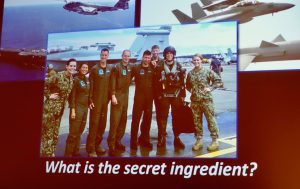
Given the differences between kinetic and non-kinetic targeting, having tight integration of technology and training (TTPs) was crucial in shaping a 21st century EW Warfighting capability.
What’s in the wingtips of that EA-18G, when operating the full capability, is unparalleled battlespace awareness distributed to the airborne force. And the Navy continues to invest in its passive sensing capabilities as our adversary systems become more complex.
And well integrated with 5th gen aircraft capability, and in about 4-5 years, next gen EA capabilities.
But EW boxes and aircraft are not what makes this work – it takes people and innovation with complicated EW technologies to realize the capability.
When we were at Fallon, we discussed how the US Navy and Air Force are working integration of EW capabilities and the challenges to doing so.
The Aussies are working Wedgetail with F-22s, and the US Navy is working Growlers with F-22s, and at the Red Flags they are now working F-35s, with F-22s, with Growlers, with the new EW capabilities on the Typhoon to shape ways to deliver integrated EW combat capabilities.
https://sldinfo.com/f-35-at-red-flag-renorming-of-airpower-in-process/
https://sldinfo.com/red-flag-2017-1-the-perspective-of-the-6-squadron-officer-commanding/
This is clearly a work in progress.
I had the opportunity to see it up close in Red Flag Alaska last year. 4th gen Canadian classic hornets, F-15Es, VAQ-135 Growlers (with Aussie crews), Raptors, Wedgetail. Everyone has gaps – physics has limits.
But our innovative JO’s roll up their sleeves and mission plan, making EW/SEAD contracts with their counterparts – they’re talking spectrum; sensors; gaps in capabilities; and contracts to ensure that non-kinetic effects are layered and distributed to increase lethality across the force.
It takes work to maximize innovatively our capabilities. For the US Navy, it took perseverance to innovate from a standoff EA-6B Jammer mindset, to a platform and community of experts focused on distributing battlespace awareness and attacking the enemy’s kill web across all mission areas.
US Growler Operating at RAAF Base Amberley from SldInfo.com on Vimeo.
As CDR Paul summarized how he saw the way ahead: “An innovative, team-based collaborative culture that ingrains Information Warfare strengthens the VAQ community’s enduring international partnership in EW.”
Editor’s Note: The photos in the slideshow were shot during a visit this Spring to Amberley Airbase where the Aussie Growlers are based and are credited to Second Line of Defense.
See also the following:


